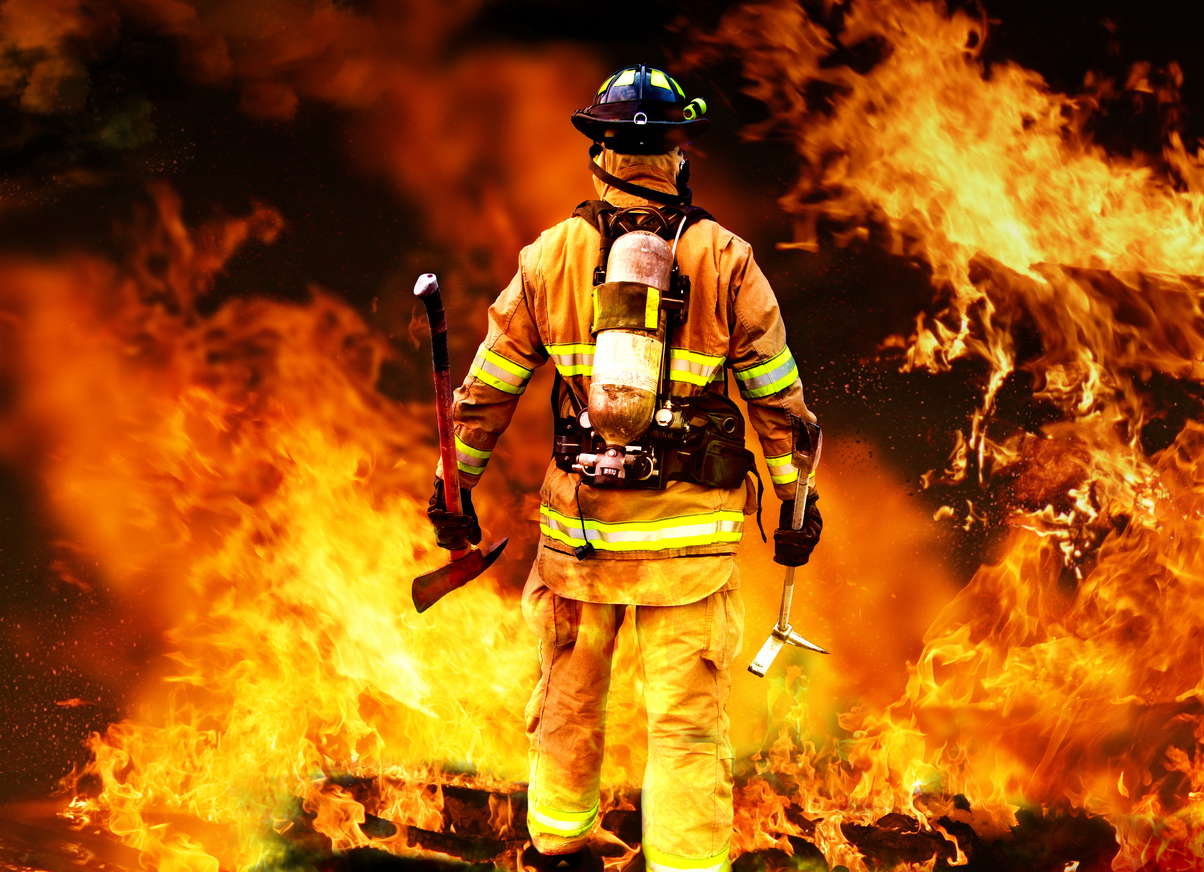
Firefighting is one of the world’s riskiest occupations. Firefighters’ health is jeopardized regularly, with no idea of what they will encounter when they start their shifts. Firefighters are commonly called to a residential fire, a commercial complex or an industrial site. Each location has individual hazards, but the most common material that threatens firefighters long term health is asbestos. Fires of any severity level can release asbestos into the atmosphere, exposing firefighters to the toxic elements.
How Firefighters Are Exposed
Firefighters are exposed to every material used to construct the buildings they extinguish. Buildings built before the 1980’s commonly contain a wide range of asbestos-based construction products. These products are usually stable when left untouched, but fire damage allows asbestos to become airborne in smoke and debris.
Firefighters can help combat the exposure using a self-contained breathing apparatus (SCBA) with a high-efficiency particulate air filter (HEPA). Firefighters today wear this protective gear to avoid inhaling asbestos and other toxic materials on the job. But in the past, asbestos dangers were not widely known.
Asbestos exposure didn’t stop at the fire scene, as those contaminated with asbestos would accidentally transport the fibers back to the firehouse. Additionally, asbestos was used in many fire hall building products, fire truck parts, and protective equipment.
Asbestos Used in Older Buildings
Most older buildings standing today still contain asbestos products, including:
- Wall and ceiling insulation
- Drywall board, compound, and tape
- Flooring underlay and tiles
- Roofing shingles
- Exterior cement-board siding
- Masonry cement powder
- Electrical wiring insulation
- Paint, adhesives, and sealants
- Fireproofing materials
- Sound deadening applications
Firefighter Health Risk
Some firefighters spend their careers in dangerous situations for 30-40 years, attending hundreds of fire scenes, being exposed to asbestos for years on end. Asbestos fibers are extremely dangerous to anyone exposed to the airborne particles and inhaled fibers can embed themselves into the lungs or abdominal linings and can not be expelled once lodged in the tissues.
When asbestos fibers have lodged themselves within the human body they can eventually trigger a deadly form of cancer called mesothelioma. Often, inhaled or ingested asbestos does not produce symptoms for decades, and mesothelioma can even develop anywhere from 20 to 50 years after asbestos exposure. It is crucial for firefighting operations to take proper precautions to protect the health of their members.
About Provident Fire Plus
At Provident Fire Plus, we offer custom tailored packages to best protect firefighters and volunteer firefighters. We understand the risks that emergency response teams are subjected to on a daily basis, and have worked to serve these dedicated professionals for over 87 years. For more information about our products and policies, we invite you to contact our experts today at (855) 201-8880.

